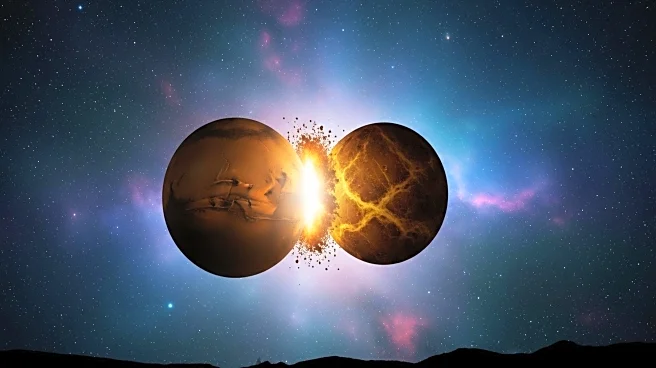What's Happening?
A recent study has uncovered a hidden hierarchical pattern in Earth's geological history, suggesting that transitions between geological time periods follow a structured multifractal logic. The research, led by Andrej Spiridonov from Vilnius University, analyzed time divisions based on stratigraphic ranges of marine animals and ancient taxa. The study found that geological boundaries form clusters separated by periods of calm, indicating a complex system of variability. This discovery could provide insights into Earth's past and future changes, emphasizing the need for geological records spanning at least 500 million years.
Why It's Important?
Understanding the structured patterns in Earth's geological history is crucial for modeling future planetary changes. This research challenges the notion of random geological events, suggesting a deeper, hierarchical structure. Such insights could improve predictions of future environmental shifts, aiding in climate change modeling and disaster preparedness. The study highlights the importance of long-term geological records, which are essential for comprehending Earth's full range of behaviors and potential upheavals. This knowledge is vital for policymakers and scientists working on environmental conservation and sustainable development.
What's Next?
The study's findings could lead to further research into Earth's geological patterns, potentially influencing how scientists model future planetary changes. Researchers may develop new models to better understand the distribution of geological time units and their boundaries. This could enhance predictions of environmental shifts and inform strategies for mitigating their impacts. As the study suggests a structured pattern in Earth's history, it may prompt a reevaluation of existing geological models and theories, leading to advancements in Earth sciences.
Beyond the Headlines
The discovery of structured patterns in Earth's geological history raises questions about the predictability of natural events and their implications for human society. Understanding these patterns could lead to more accurate forecasts of natural disasters, helping communities prepare and adapt. The study also underscores the interconnectedness of Earth's systems, highlighting the need for interdisciplinary approaches in environmental research. As scientists continue to explore these patterns, ethical considerations regarding resource management and environmental protection may become increasingly important.












